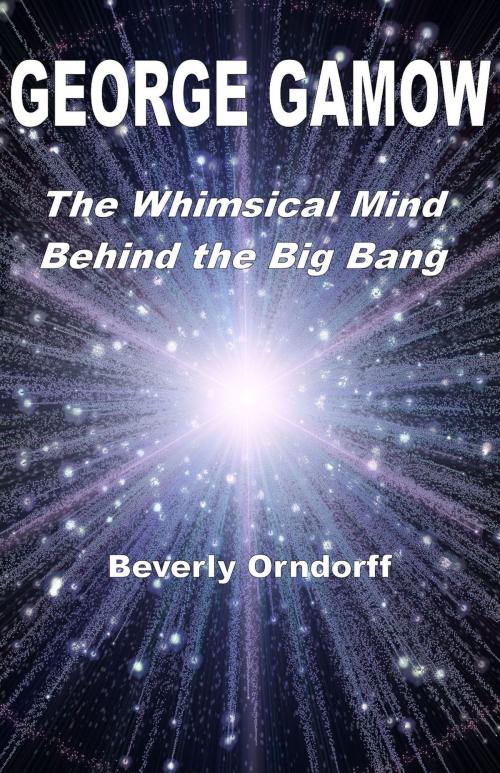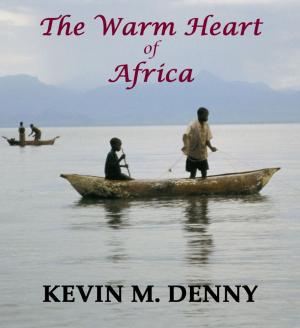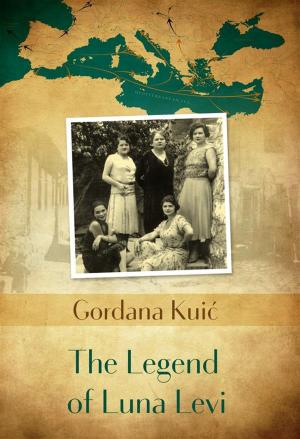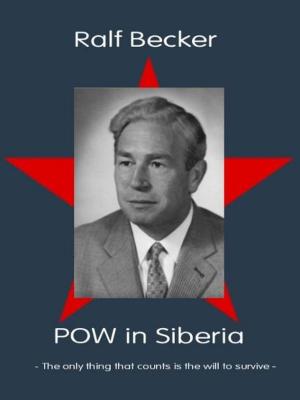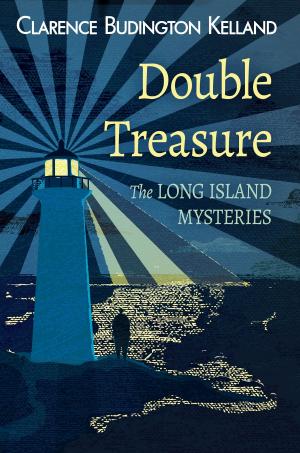| Author: | Beverly Orndorff | ISBN: | 9780988988606 |
| Publisher: | Beverly Orndorff | Publication: | February 6, 2013 |
| Imprint: | Smashwords Edition | Language: | English |
| Author: | Beverly Orndorff |
| ISBN: | 9780988988606 |
| Publisher: | Beverly Orndorff |
| Publication: | February 6, 2013 |
| Imprint: | Smashwords Edition |
| Language: | English |
"George Gamow: The Whimsical Mind Behind the Big Bang" details the life and scientific contributions of an influential and colorful 20th century scientists that many laymen nowadays have never heard of. George Gamow (1904-1968), a fun-loving Russian-born American physicist, was a science polymath who laid the foundation for the modern version of the Big Bang theory and led two colleagues to propose that the dying energy from that event should still pervade the cosmos. That signature of the Big Bang was indeed detected some years later, confirming that the universe had a definite beginning, on a “day without a yesterday,” as one pioneer cosmologist put it.
But the scientists who actually detected the Big Bang energy were totally unaware of the earlier Gamow-inspired work, which was forgotten and ignored by many. Some say it may have been due partly to difficulties of taking Gamow seriously because of his constant clowning and drinking. He once tried to outdraw Nobel Laureate Niels Bohr with toy pistols Wild-West style. He occasionally slipped fictitious names on scientific papers as a joke. He famously added the name of a physicist friend, Hans Bethe, to what became a landmark paper by his student, Ralph Alpher, and himself so the authorship would read, “Alpher, Bethe and Gamow.”
But for all of his clowning, Gamow was indeed a serious physicist who worked with many of the 20th century’s most prestigious scientists, including Albert Einstein, Madame Curie, Niels Bohr, Ernest Rutherford, Edward Teller, Hans Bethe, Robert Oppenheimer, Paul Dirac and Enrico Fermi.
He became an international physics star in the late 1920s when he helped pioneer the modern era of nuclear physics by applying the then-new quantum mechanics to explain nuclear alpha radioactivity. Nuclear physics remained a guiding perspective for him throughout his career, during which he explored and contributed to the understanding of stellar energy; of particle accelerators; of fusion research and of the origin of the universe.
Practically all scholarly accounts of the Big Bang theory today cite Gamow's pioneering role in its development. He took a side excursion into biology in the 1950s when he played an influential role in efforts to break the DNA code.
Although nominated, Gamow never won a Nobel Prize, but more than a half a dozen Nobel Laureates have cited Gamow’s pivotal role in their work.
Equally important was his role as an internationally acclaimed author of popular science books for lay audiences, books that inspired many youngsters to follow science careers, including several who later won Nobel Prizes. Gamow received international recognition for his popular science writing in the form of the Kalinga Prize, which is awarded by UNESCO to people who have made outstanding contributions to the interpretation of science and technology to the general public.
This is the first complete biography of George Gamow.
"George Gamow: The Whimsical Mind Behind the Big Bang" details the life and scientific contributions of an influential and colorful 20th century scientists that many laymen nowadays have never heard of. George Gamow (1904-1968), a fun-loving Russian-born American physicist, was a science polymath who laid the foundation for the modern version of the Big Bang theory and led two colleagues to propose that the dying energy from that event should still pervade the cosmos. That signature of the Big Bang was indeed detected some years later, confirming that the universe had a definite beginning, on a “day without a yesterday,” as one pioneer cosmologist put it.
But the scientists who actually detected the Big Bang energy were totally unaware of the earlier Gamow-inspired work, which was forgotten and ignored by many. Some say it may have been due partly to difficulties of taking Gamow seriously because of his constant clowning and drinking. He once tried to outdraw Nobel Laureate Niels Bohr with toy pistols Wild-West style. He occasionally slipped fictitious names on scientific papers as a joke. He famously added the name of a physicist friend, Hans Bethe, to what became a landmark paper by his student, Ralph Alpher, and himself so the authorship would read, “Alpher, Bethe and Gamow.”
But for all of his clowning, Gamow was indeed a serious physicist who worked with many of the 20th century’s most prestigious scientists, including Albert Einstein, Madame Curie, Niels Bohr, Ernest Rutherford, Edward Teller, Hans Bethe, Robert Oppenheimer, Paul Dirac and Enrico Fermi.
He became an international physics star in the late 1920s when he helped pioneer the modern era of nuclear physics by applying the then-new quantum mechanics to explain nuclear alpha radioactivity. Nuclear physics remained a guiding perspective for him throughout his career, during which he explored and contributed to the understanding of stellar energy; of particle accelerators; of fusion research and of the origin of the universe.
Practically all scholarly accounts of the Big Bang theory today cite Gamow's pioneering role in its development. He took a side excursion into biology in the 1950s when he played an influential role in efforts to break the DNA code.
Although nominated, Gamow never won a Nobel Prize, but more than a half a dozen Nobel Laureates have cited Gamow’s pivotal role in their work.
Equally important was his role as an internationally acclaimed author of popular science books for lay audiences, books that inspired many youngsters to follow science careers, including several who later won Nobel Prizes. Gamow received international recognition for his popular science writing in the form of the Kalinga Prize, which is awarded by UNESCO to people who have made outstanding contributions to the interpretation of science and technology to the general public.
This is the first complete biography of George Gamow.
